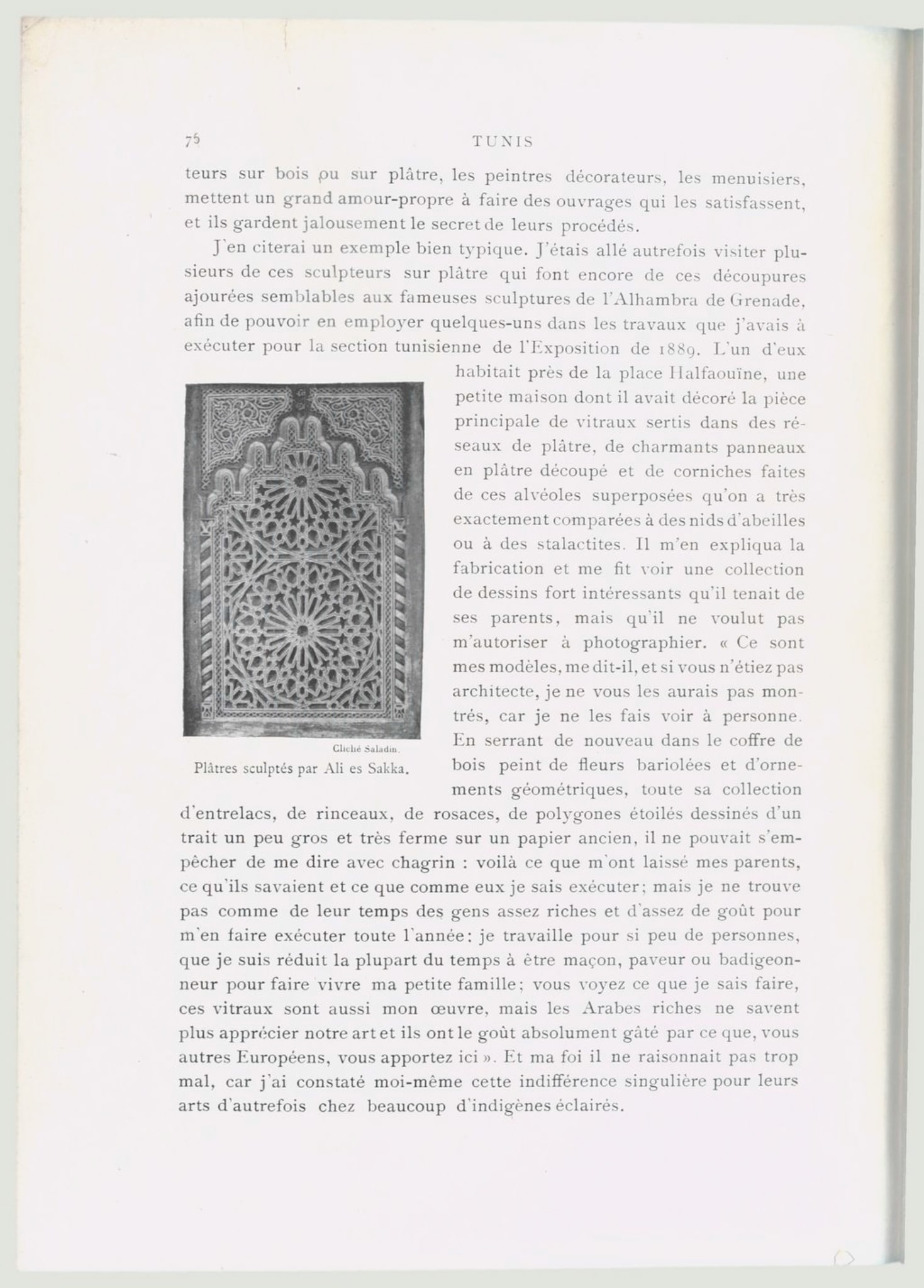Research
In the caption, this photograph is described simply as sculpted plasterwork by Ali es Sakka (‘Plâtres sculptés par Ali es Sakka’). It is therefore unclear whether it shows a carved stucco panel, or it has perforations filled with pieces of glass. The paragraphs around the illustration refer to Saladin’s commission of stucco and glass windows from Tunisian sculptors for the Tunisian pavilion at the Exposition Universelle in Paris in 1889. This may indicate a connection of the window illustrated and the Exposition Universelle of 1889 (Saladin, 1908, p. 76).
Whether the photograph represents a stucco panel or a stucco and glass window, the typology shown – an arch resting on two engaged columns with carved spandrels, with the main stucco section under the arch showing a geometric pattern based on stars – is a consistent feature of Tunisian windows at world’s fairs. Already at the first world’s fair, the Great Exhibition in London in 1851, Tunis exhibited a stucco window with an arch resting on engaged columns with carved spandrels, with perforations in the central stucco field forming a geometric pattern around pointed stars (IG_410). The same typology can be found at the International Colonial Exhibition in Amsterdam in 1883 (Victoria and Albert Museum, 1277-1883). A photograph showing the pieces of glass arranged as eight-pointed stars under an arch on the rear of one window in the Tunisian pavilion at the 1889 Exposition Universelle in Paris also indicates the same typology (IG_92).
In addition to the window from the Amsterdam Colonial Exhibition preserved at the Victoria and Albert Museum in London, several windows of this typology that entered the collection of the Orientalische Museum (now in the MAK Vienna) in the 19th century (IG_362, IG_363, IG_364, IG_365, IG_366, IG_367, IG_368) demonstrate the availability of this type of stucco and glass window in 19th-century Europe.
Dating
1908
Related Locations

